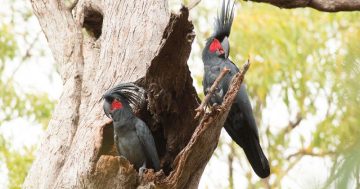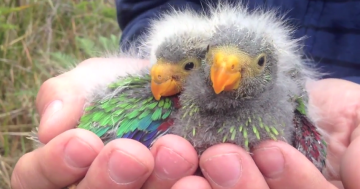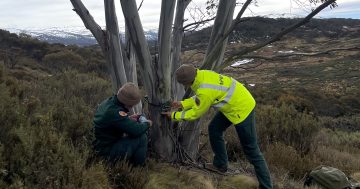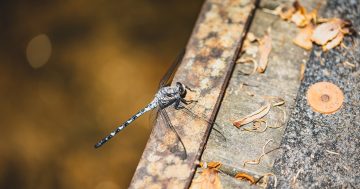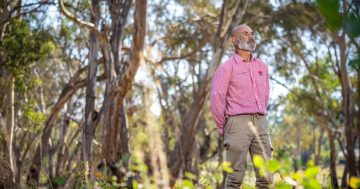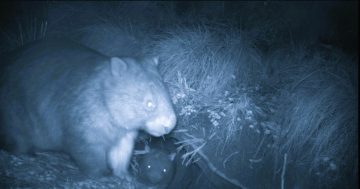
The critically endangered regent honeyeater is losing its ‘song culture’ due to the bird’s rapidly declining population. Photo: Murray Chambers.
The song of the regent honeyeater is widely regarded as one of the ACT’s most beautiful sounds, but there are fears it could become a swan song within two decades.
New research from the Australian National University reveals that the small and mottled yellow native song bird could be extinct within 20 years if the situation doesn’t improve.
Lead author Professor Rob Heinsohn says that less than 80 years ago, the regent honeyeater was one of the most commonly encountered species in Australia, from Adelaide to Rockhampton, but now it is on track to go the way of the dodo.
“The regent honeyeater population has been decimated by the loss of more than 90 per cent of its preferred woodland habitats,” he says.
The regent honeyeater was listed as critically endangered in NSW and the ACT in April 1999. Today, there are fewer than 300 of them left, making it one of our rarest bird species in Australia.
It’s a small bird, with adults ranging between 200mm and 240mm in length. It can be recognised by its black head gradually fanning through polka dots into a magnificent yellow tail.
Current management of the species includes maintenance of existing woodlands, limited removal of live and dead timber, and minimising the effects of fire. Habitat loss due to fire and clearing works has forced them to compete with larger species for what’s left.
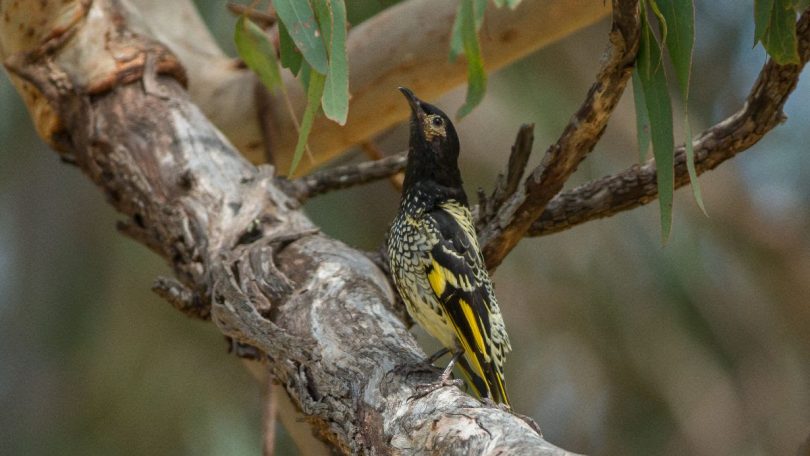
The regent honeyeater showing off its coat of yellow and black. Photo: Murray Chambers.
Professor Heinsohn says the current intensive conservation efforts are still not sufficient, and a huge effort is needed if the bird is to be rescued.
The ANU team commenced a large-scale project in 2015 to better understand the regent honeyeater population decline, but found them to be an exceptionally difficult bird to study in the wild.
Its movements are complex, but mainly governed by the flowering of a small and diminishing group of eucalypts.
After six years of intensive work in the field, the team discovered that the birds’ breeding success has declined due to predation at the nest by species such as pied currawongs, noisy miners and possums.
The end product of the study, published in Biological Conservation and co-authored by members of the Regent Honeyeater Recovery team, uses population models based on all available knowledge to predict what will happen to the wild population.
“Our models show that current conservation efforts have provided essential life support for the regent honeyeaters, but do not go far enough,” says co-author Dr Ross Crates.
The ANU has isolated three key ways the bird’s future can be secured.
First, the models show nest success rates of both wild and released zoo-bred birds must nearly double. This requires protecting nests from predation.
Second, the number of zoo-bred birds released into the Blue Mountains must increase and be sustained for at least 20 years alongside nest protection. Taronga Conservation Society has been breeding the birds in captivity and are working hard to increase the numbers for release into the wild.
Third, the models stress that the regent honeyeater population can only be secured into the future if more habitat can be protected and restored.
“Without more habitat, reintroductions and nest protection efforts will be futile because the flock sizes will never reach the critical mass needed for the birds to breed safely without our protection,” says Professor Heinsohn.
“Our study provides both hope and a dire warning – we can save these birds, but it will take a lot of effort and resources over a long time to pull it off.”












